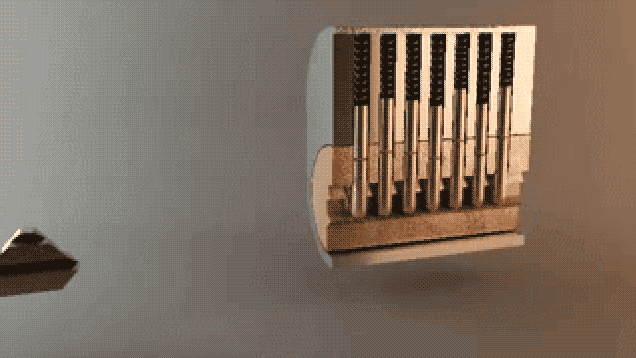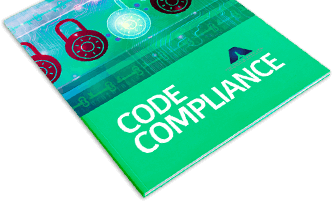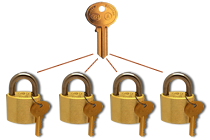
Image: Wilson Bohannon Lock Company (Marion, OH)
Any key that can open two or more locks is considered a master key. Many master keys use pin and tumbler locks.
For a master key to work, though, there must be something called master wafers inside the lock. When the master wafers line up, the key and lock can turn freely. When they don’t, it can’t.
A master key is one that works with multiple master wafer configurations.
Components of a master key
Take a look at the animated gif below and to the right (you can click it to view a larger version):
The lock cylinders you’ll find at Aim Lock & Safe comprise the following elements:
- Pins: The skinny cylinders that are moving up and down. There are two pins (one is above the line in the centre of the lock and one is below).
- Shear line: The straight line going through the middle of the lock is the shear line. When the pins line up, the shear line creates the space needed for the lock to turn.
- Key notches: The jagged edge of the key has notches designed to match the pins inside the cylinder.
What makes a master key unique is that the locks have a third pin. That’s called the master wafer and it can only be unlocked by a master key.
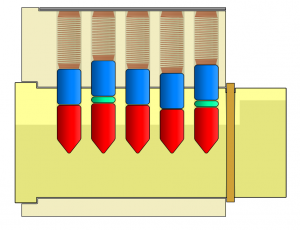
Image: TrustedSec (Strongsville, OH)
Master wafers explained
Do you see the tiny green elements in the image to the right?
Those are master wafers.
What makes them different is that a master wafer is a single piece (unlike the red/blue pins seen in this image which are split in the middle.
After master key cutting, the key is then put into a lock with master wafers. When that happens, two shear lines are created.
In this image, there are two master wafers. But locks can have as many master wafers as needed, or they can have simply one.
Master keys and change keys
When lock rekeying into a master key system, two keys are created:
- Change key: This key can open the master lock, but only the master lock. It cannot be used inside any other locks you have.
- Master key: The master key can open all locks you have in your residential or commercial property.
So, how can two different keys open the same lock?
If you remember, locks with master wafers inside create two shear lines when a key is inserted.
One shear line is created above the pin without a master wafer and one is created with the pins below the master wafer.
That means there are two ways to open the lock. The change key can only open it one way (with the shear line above the pins) while the master key can open it both ways (shear lines above and below the pins).
And that’s how a master key works.
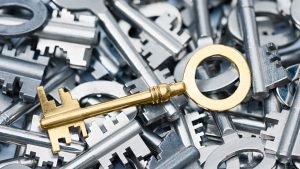
Why use master keys?
- Convenience: Reducing the weight of the keys you carry around, and eliminating the struggle to find the right one to get where it is that you need to be.
If ever an emergency, having a master key can get you in faster, without having to fumble.
- Control: An additional benefit for businesses is that reducing the number of keys they have to distribute.
This makes it much easier to track and have them returned in the case that an employee leaves the company.
Considering a master key solution?
The different applications for master keys range from simple to complex.
If you’re unsure if this system will work for you, or you’re interested in a free consultation, contact us. We’re happy to provide advice to help guide your decisions.






